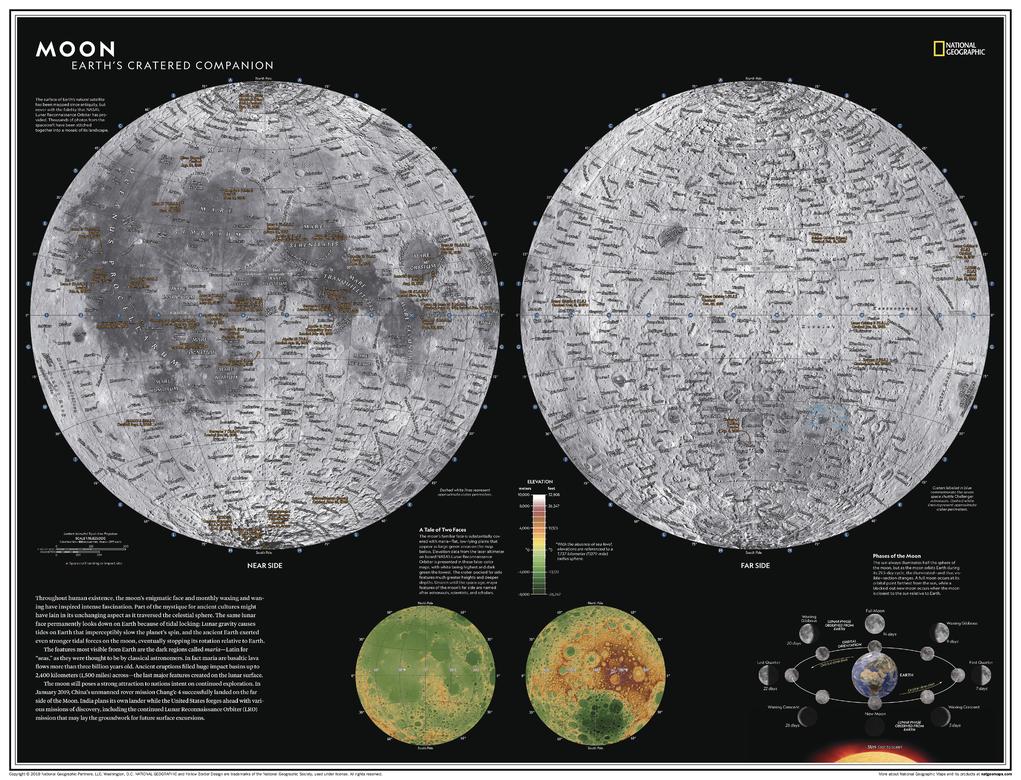Moon - Atlas of the World, 11th Edition - Compact
National Geographic
Throughout human existence, the moon's enigmatic face and monthly waxing and waning have inspired intense fascination. Part of the mystique for ancient cultures might have lain in its unchanging aspect as it traversed the celestial sphere. The same lunar face permanently looks down on Earth because of "tidal locking." In 2013, NASA announced that its GRAIL mission had solved the gravitational mystery - but what other mysteries lurk on the far side of the moon?
The surface of Earth's closest neighbor in the solar system has been mapped since antiquity, but never with the fidelity that NASA's Lunar Reconnaisance Orbiter has provided. Thousands of photos from the spacecraft were stitched together into a mosaic of the surface.
This dual-hemisphere map of the moon, drawn in Lambert Azimuthal Equal-Area projection, makes this desolate landscape both familiar and far too alien. Thousands of craters are identified on both the near and far sides, offering readers a glimpse of the side of the moon that never sees the face of the Earth. A separate hemispheric elevation map and the phases of the moon provide further detail into this celestial body so long revered by humans.
This map makes an essential companion to Solar System: The Sun's Neighborhood, and its size makes it perfect for a gallery wall
This map is found in National Geographic's 11th Edition World Atlas and is now available as a stand alone product.
Page Size: 21.5 x 16.25 in (540 x 413 mm)
Buy this map on MapTrove.ca
